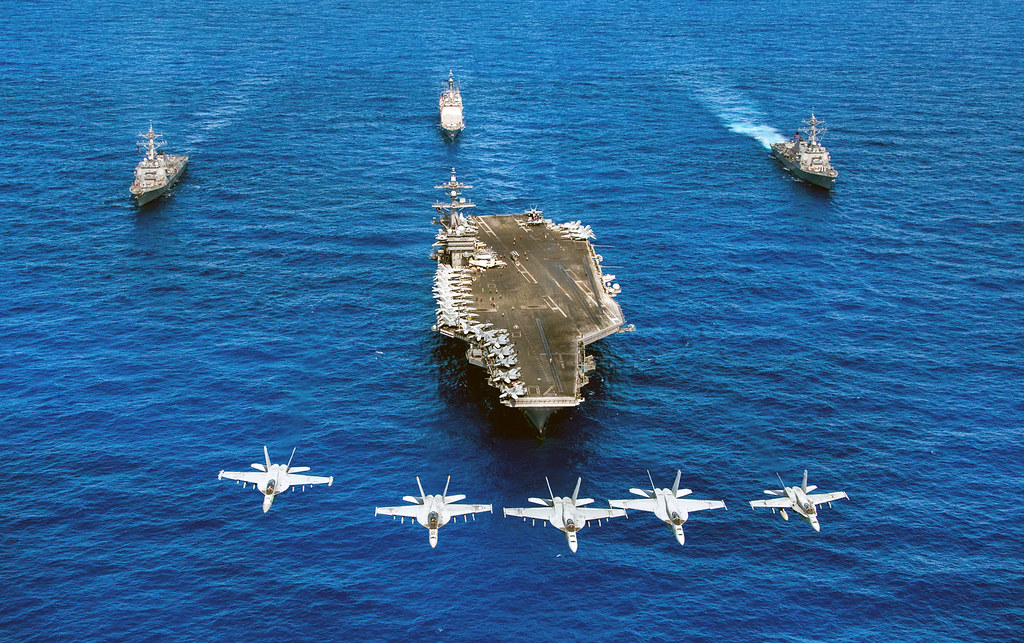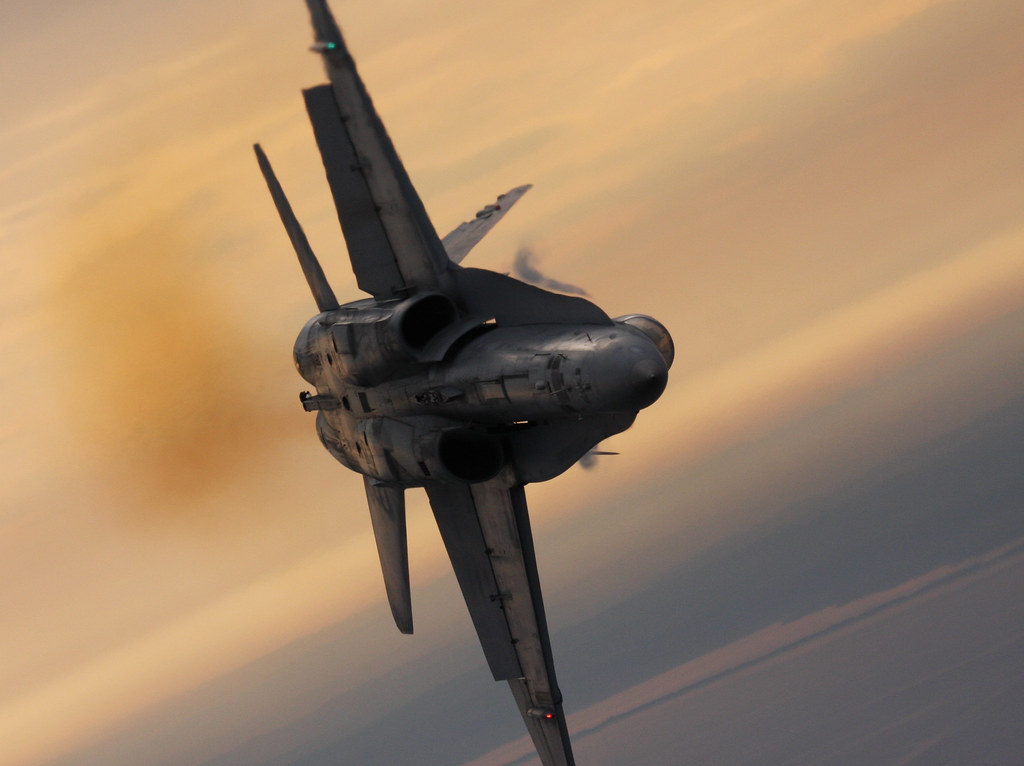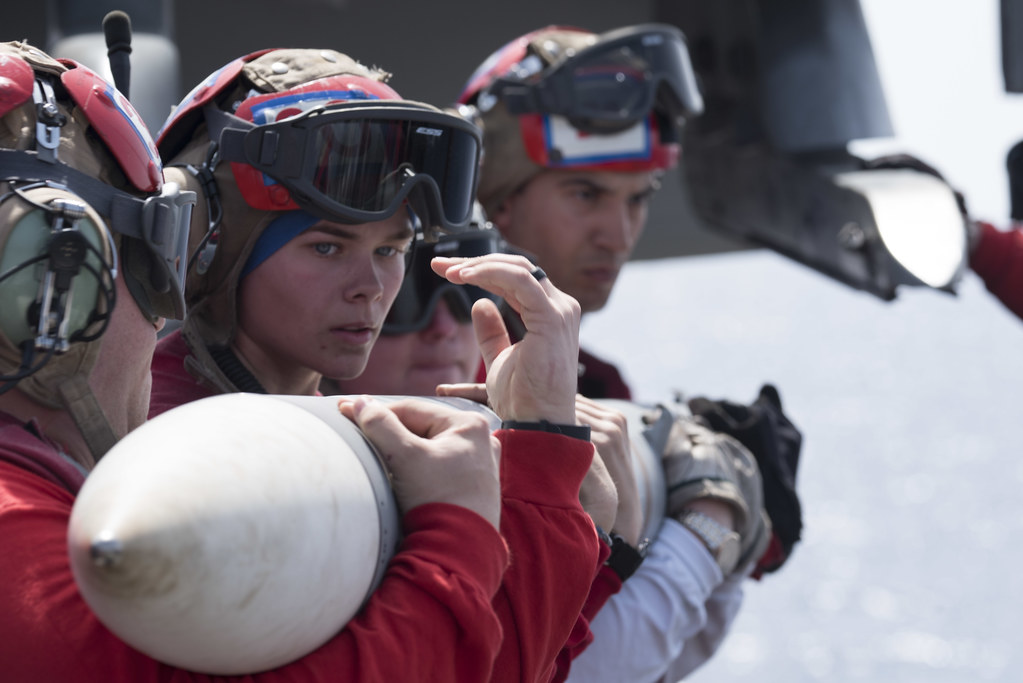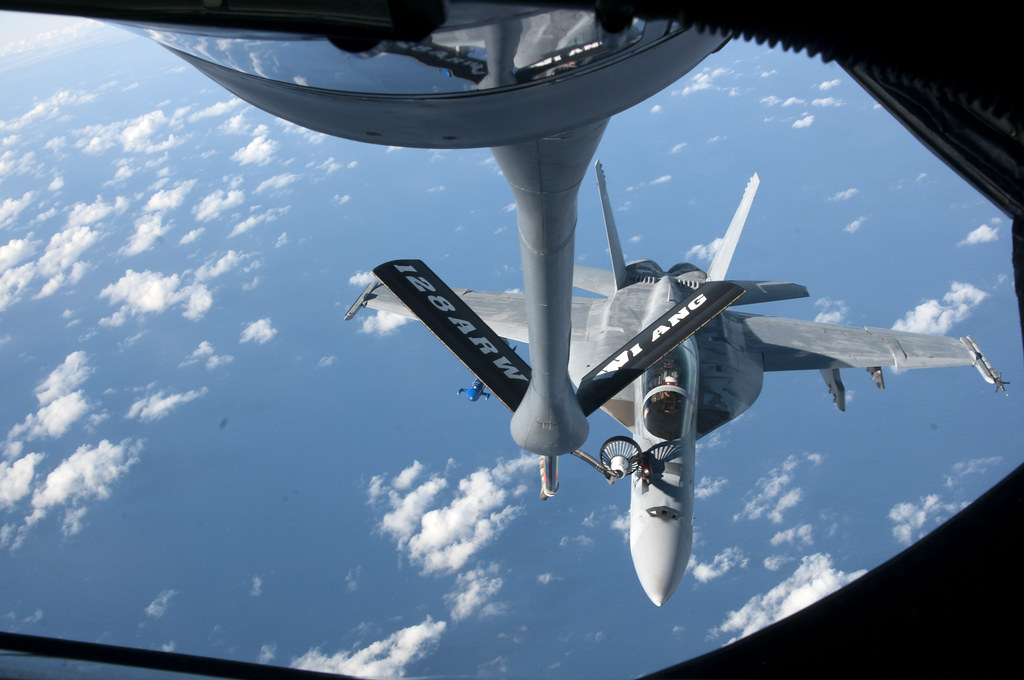
The F/A-18 Hornet is an embodiment of aerial might and versatility that has left an indelible mark on U.S. naval history. This carrier-based multirole aircraft, introduced in 1983, revolutionized naval air combat with its dual fighter and attack capabilities.

Its ability to execute both air-to-air and air-to-ground missions with a variety of weaponry, including AIM-9 Sidewinders and smart bombs, has made it a formidable tool in the U.S. military’s arsenal.

Although the U.S. Navy retired its last squadrons of Hornets in 2019, the Marine Corps and several international forces continue to deploy this iconic jet.

The Hornet’s service life extends well beyond American carriers; the Finnish and Spanish air forces still fly the Hornet, proving its lasting global influence.

The creation of the “F/A” designation stands as a testament to the Hornet’s legacy.

During the First Gulf War in 1991, a pair of Navy Hornets switched from ground attack to air-to-air mode mid-flight, shooting down two Iraqi MiG-21s before resuming their original mission.

This groundbreaking capability resulted in the “F/A” designation for Fighter/Attack, which will endure in future aircraft like the F/A-XX.

The Hornet’s history intertwines with significant combat actions, including its first combat action during Operation El Dorado Canyon, the air strikes against Libya.

It also saw extensive use in Operation Desert Storm, where Hornets not only neutralized air threats but also delivered precision ground attacks. These multi-mission capabilities reinforce the Hornet’s status as a versatile and reliable platform.

Upgrades to the Hornet have kept it competitive over the years, leading to the development of the larger and more capable F/A-18E/F Super Hornet.

The Super Hornet boasts a 20% larger airframe and increased fuel capacity, extending its operational range and endurance.

The first operational cruise of the Super Hornet was with VFA-115 onboard the USS Abraham Lincoln, and it has since proven its worth with increased range, payload capability, and cost efficiency.

With its 50,000-foot ceiling, Mach 1.7 speed, and array of armaments, the Hornet and its Super Hornet variant have played and continue to play pivotal roles in naval aviation, from patrolling the skies over the Strait of Hormuz to engaging in the Global War on Terror.

As the backbone of the U.S. Navy’s aerial fleet, the Hornet’s impact on naval warfare and its contributions to historical military engagements are undeniable.

The F/A-18 Hornet, a legend in its own right, remains a subject of fascination and respect among military tech and politics enthusiasts worldwide.

